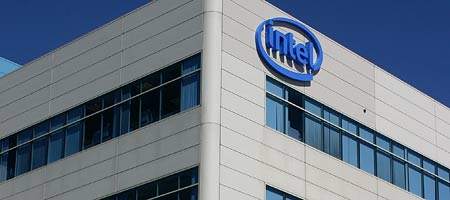Former Intel CTO Pat Gelsinger once predicted that Nehalem-based Xeon 5500 servers would act as “cash machines” for the IT industry. Although Pat recently left the company to pursue other opportunities at EMC, his description of the 5500 was validated during a briefing in San Francisco.

According to Intel CIO Diane Bryant, the Xeon 5500 has delivered a very respectable ROI for customers – with power and cooling cost savings paying for the servers in less than 12 months. To illustrate her point, Byrant noted that Intel managed to save a significant amount of money by swapping the company’s older servers for Nehalem-based units.
“Although 2009 was a challenging year, Intel continued with its plan to replace older servers with Nehalem-based units. We achieved a 10-to-1 replacement ratio, meaning that 10 [last-generation] servers were exchanged for a single Nehalem unit,” said Bryant. “Not replacing the servers, or deferring the decision, would have cost Intel $19 million due to high maintenance and cooling costs. We project that Nehalem will save us a total of $250 million over an 8 year period.”

Bryant explained that sales of the Xeon 5500 have continued apace despite the economic recession. Indeed, Terence Judkins, Director of Systems at Group One Trading, told reporters that his need for intensive compute power has not “dropped” during the downturn.
“Yes, 2009 has certainly been challenging, but we still need fast compute power to stay current and competitive,” stated Bryant. “We were early adopters of Nehalem because we required a faster clock cycle. We held off on other projects, but continued to spend on the server side regardless of the economic climate.”
Brian Kucic of R Systems expressed similar sentiments, noting that clients, particularly in the oil and gas industry, continued to demand fast computing solutions. Kucic added that his company had provided Wolfram Alpha with HPC Xeon 5500-based systems which offered “twice the performance” with just half the number of servers. However, Kucic did concede that slashed budgets have seriously affected the hardware industry.
Has the sluggish market impacted Intel? Undoubtedly. Yet, the chip firm actually managed to expand its lead in the struggling global microprocessor sector by capturing 80.6 percent of the segment’s revenue during the second quarter of 2009.
Nevertheless, Intel remains wary of AMD which still controls 10 percent of the server market and recently introduced its indigenous, Opteron-based Fiorano platform.

Intel is also concerned about the potential threat posed by Sun’s SPARC processor. In May, Oracle CEO Larry Ellison insisted that SPARC processors were “much more energy efficient” than Intel chips.
The claim prompted an official response from Intel’s Eoin McConnell, who emphasized that Sun continued to use watts per thread as measure of energy efficiency.
“The recognized industry standard benchmark for measuring energy efficiency is SPEC power and I don’t see any SPARC based results in the 91 results published. The absence of a result certainly says something very clear to me – no story,” opined McConnell. “[Plus], Xeon 5500 has performance leadership over 2S UltaSPARCT2+ across a wide range of benchmarks. Up to 70 percent more performance and up to 60 percent lower system cost.”

However, Intel’s fears over Ellison’s statement may have been slightly assuaged by the September launch of the Oracle-Sun Exadata 2 database machine – which features Sun’s FlashFire memory cards along with Xeon processors.






